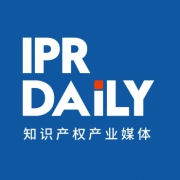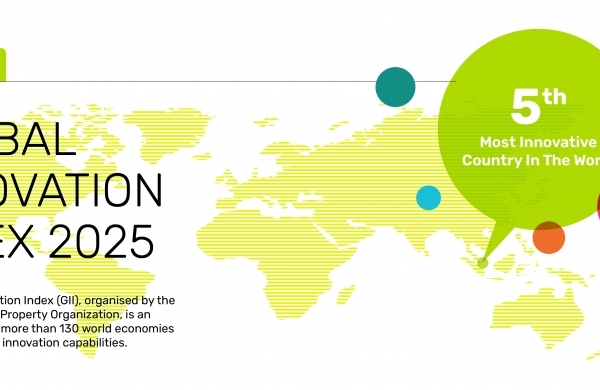Did not receive verification mail? Please confirm whether the mailbox is correct or not Re send mail

IPR Daily
- 2022-09-14 16:05:23
Guidelines of SEP License for Automotive Industry
Introduction
Automotive industry is the leading industry of a new round of sci-tech revolution, and intelligent connected vehicles (ICV) has become the strategic direction of the global automotive industry. To promote the healthy and sustainable development of ICV industry, accelerate the integration and innovation of automobile, information and communications technology (ICT), and AI industries, protect fair competition, and safeguard the social public interest, Guidelines of Standard Essential Patent License for Automotive Industry (2022 Edition) (hereinafter referred to as the "Guidelines") is jointly issued by the IP Committee of China Society of Automotive Engineers (China-SAE), the Promotion Group of IMT-2020 (5G), and working group of automotive standard essential patents. The Guidelines puts forward four core principles, including "license to all", clarifies the calculation basis, considerations, the cap of royalty, and provides reference documents for standard essential patent licensing of automotive industry.
Guidelines of Standard Essential Patent License for Automotive Industry
(2022 Edition)
The automotive industry is pioneering in the new round of technological revolution. As intelligent connected vehicles (ICV) develop vigorously, automotive technologies and interdisciplinary technologies which represented by wireless telecommunications technologies have demonstrated over time a trend of convergent development, technical standards followed in automobile products have come to involve an increasing number of patent technologies. Due to the relatively large differences among industries in terms of intellectual property protection and patent licensing models, as a result, new issues such as standard-essential patent licenses have emerged.
To further promote high-quality development of the automotive industry and form positive interactions and integration among different industries, China Automotive Technology and Research Center Co., Ltd. (CATARC) and China Academy of Information and Communications Technology (CAICT), with support from IP Committee of China-SAE, the IMT-2020 (5G) Promotion Group and the Working Group on Automotive Standard Essential Patents, have organized industrial experts to conduct drafting, research and demonstration, solicited opinions within their respective working groups, which has led to the formulation of the Guidelines of Standard Essential Patent License for Automotive Industry as a reference.
I.Definitions
“Standard Essential Patent (SEP)” means a patent that is necessary for the implementation of a technical standard.
“Automotive Product” refers to a part or component of an automobile or the automobile.
“Automotive Industry SEP” refers to an SEP involved in technical standards followed by Automotive Products.
“Fair, Reasonable and Non-discriminatory” is a licensing principle recognized by worldwide standard setting organizations (SSOs), also known as the FRAND principle.
II.Core Principles for Automotive SEP Licenses
1.Principle of Balancing of Interests
SEP licensing should follow the principle of balancing of interests, which should not only ensure reasonable returns to the patentee for its investment in innovation, but also cause the amount of royalties to be maintained within a reasonable range, so as to ensure the technical standards can be widely popularized and applied, and promote healthy and sustainable development of the automobile industry. In addition, the interests of the public should also be considered.
2.Principle of Fair, Reasonable and Non-discriminatory
The principle of “fair and reasonable” refers to the entitlement of an SEP owner to obtain a return on its investment in R&D and technological innovation on the premise of compliance with FRAND principle, returns generated from the patentee’s licenses should be limited to a reasonable range.
The principle of “non-discriminatory” means an SEP owner should license with substantially identical or similar terms to the implementers under substantially identical or similar conditions, and unjustified refusal to license or attachment of unreasonable licensing conditions is prohibited; if there are significant differences in licensing conditions or terms, a reasonable explanation should be provided so as to avoid the situation where the implementers under substantially identical or similar conditions are at competitive disadvantage.
In the event of subsequent succession, assignment or other change of ownership of the SEPs , the original patentees should make efforts with its successors or assignees to ensure them compliant to the FRAND principle appropriately.
3.Principle of Entitlement to Obtain Licenses at Any Level in the Industry Chain ("license to all")
According to the FRAND commitment of SSO or the SSO’s intellectual property policy, any good faith patent implementer is entitled to obtain an SEP license, SEP owner is obliged to license to an implementer who intends to obtain a license (“license to all”), regardless of the level in the industry chain.
An SEP owner should not repeatedly charge SEP royalties to manufacturers at different levels of the same industry chain.
4.Principle of Handling Differences Between Industries Through Negotiation
The automotive industry chain is a complex system and tens of thousands of parts and components are involved in a vehicle. In the current mature industrial practice, the prevalent business custom in the automotive industry is to adopt a vertical licensing model along the industry chain; that is, automotive enterprises usually contract with their upper-level suppliers to resolve intellectual property license issues related to the supplied parts and components, and automobile manufacturers usually resolve intellectual property issues through their suppliers for all kinds of parts and components of an automobile.
When there are discrepancies or differences between SEP licensing model and current licensing model or commercial custom, it is appropriate to fully respect and consider the industry characteristics and business customs, positively discuss and negotiate in seeking a licensing model accepted by both parties.
III.Principles for Calculating Reasonable Royalties
1.SEP Royalties Basis
For the SEP royalty basis, the basis should be set as the product unit that actually contributes to the Automotive Product by SEP technology, excluding other product units that are not related to the SEP technology.
Regardless of whether the basis is the parts and components of an Automotive Product or the automobile, the actual value contributed by SEP technology to the Automotive Product should be taken into consideration; moreover, regardless of the license level, the SEP royalty for the same Automotive Product should be approximately the same, the royalty should not differ significantly among various license levels.
2.Factors for Calculating Royalties
Reasonable royalty should consider the actual value contributed by the SEP technology to the Automotive Product, the cumulative royalty rate in the industry, the number of SEPs held by the patentee, the geographical distribution of the patents, etc. The royalty rate should not be raised when the patent is in line with the standard.
The determination of the value contributed by SEPs to Automotive Products needs to be taken into account that the value of Automotive Products collectively comprises various aspects such as technology, market, production, brand and after-sales, especially the contribution of brand; in addition, the contribution of SEP technologies to the sales and profits should also be considered.
Patent rights have geographical attributes. For reasonable royalty, factors such as production and sales area of implementer, patent geographical distribution of patentee, and variances in economic conditions of different regions may also be considered, so that varying royalty rates may be applied to different regions.
3.Principle of Limitation to Aggregate Royalty Rates
To achieve a balance of interests between the licensing parties, a reasonable cap should be imposed against the aggregate amount of SEP royalties for Automotive Products. This cap could be a certain fraction of the reasonable profits in the industry of the licensed products.
Aggregate royalty rates for SEPs under the same technical standard may vary when the SEPs are implemented in different industries.
4.Reasonable Selection of Royalty Calculation Method
When calculating SEP royalties, methods may be adopted such as “Top-down” and comparable license method.
“Top-down” method can avoid royalty stacking. Firstly, the cap of the aggregate royalty rate should be determined for all the SEPs under a specific standard, then the actual share of the SEPs should be calculated by different patentees, and finally, the respective reasonable royalty shares could be reached.
When adopting the comparable license method, the factors shall be considered, such as the relevance of participator,licensed product, licensed territory, and licensed subject matter, counterparty included in licensing , as well as negotiation process for each party.
Regardless of adoption of “Top-down” or comparable license method, the actual share of SEP owners and the geographical distribution of SEP portfolios should be considered. Consideration can also be given to the SEPs’ actual contributions and proposals.
IV.Right of Interpretation and Declarations
These guidelines are subject to interpretation by the IP Committee of the China-SAE, the IMT-2020 (5G) Promotion Group and the Working Group on Automotive Standard Essential Patents.
These guidelines will come into effect from the date of promulgation.
If there is any inconsistency between the provisions in the guidelines and the current domestic laws and regulations, the current laws and regulations shall prevail.
Source: IP Committee of China-SAE-IMT-2020 (5G) Promotion Group-Working Group on Automotive SEP
Editor: IPR Daily-Ann
- I also said the two sentence
- Also you can enter 140words
 TOP IPR U.S. Lawyers 10 & Firms 10 Selection Officially Launched by IPR Daily
TOP IPR U.S. Lawyers 10 & Firms 10 Selection Officially Launched by IPR Daily WIPO Global Innovation Index 2025: China Enters Top 10
WIPO Global Innovation Index 2025: China Enters Top 10 Singapore ranks 5th in the 2025 Global Innovation Index; climbed two spots in Innovation Outputs
Singapore ranks 5th in the 2025 Global Innovation Index; climbed two spots in Innovation Outputs Federal Circuit lacks jurisdiction over award that doesn’t raise issue of patent law
Federal Circuit lacks jurisdiction over award that doesn’t raise issue of patent law


